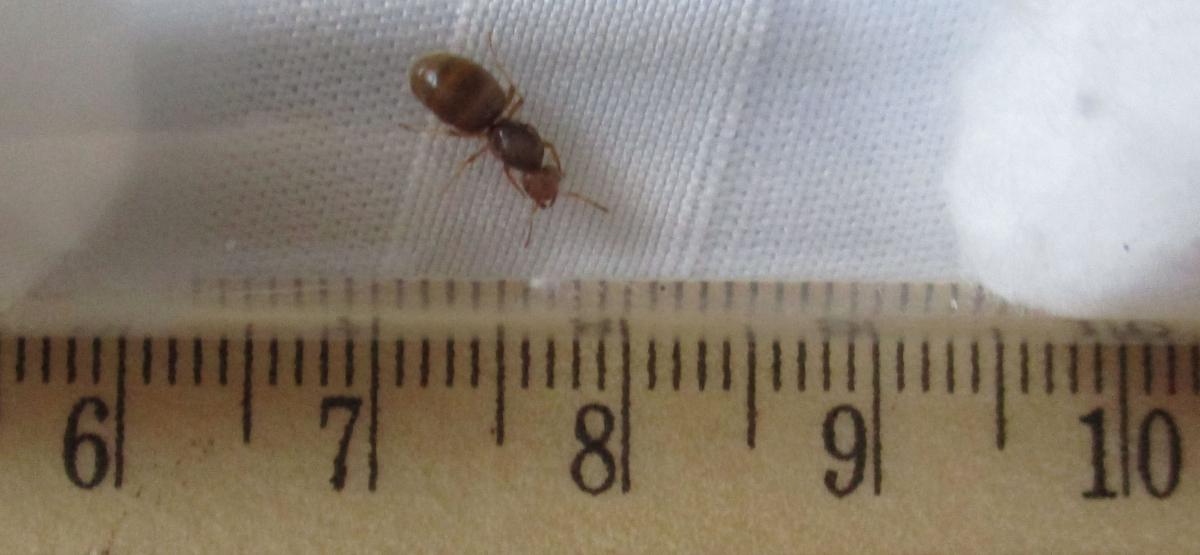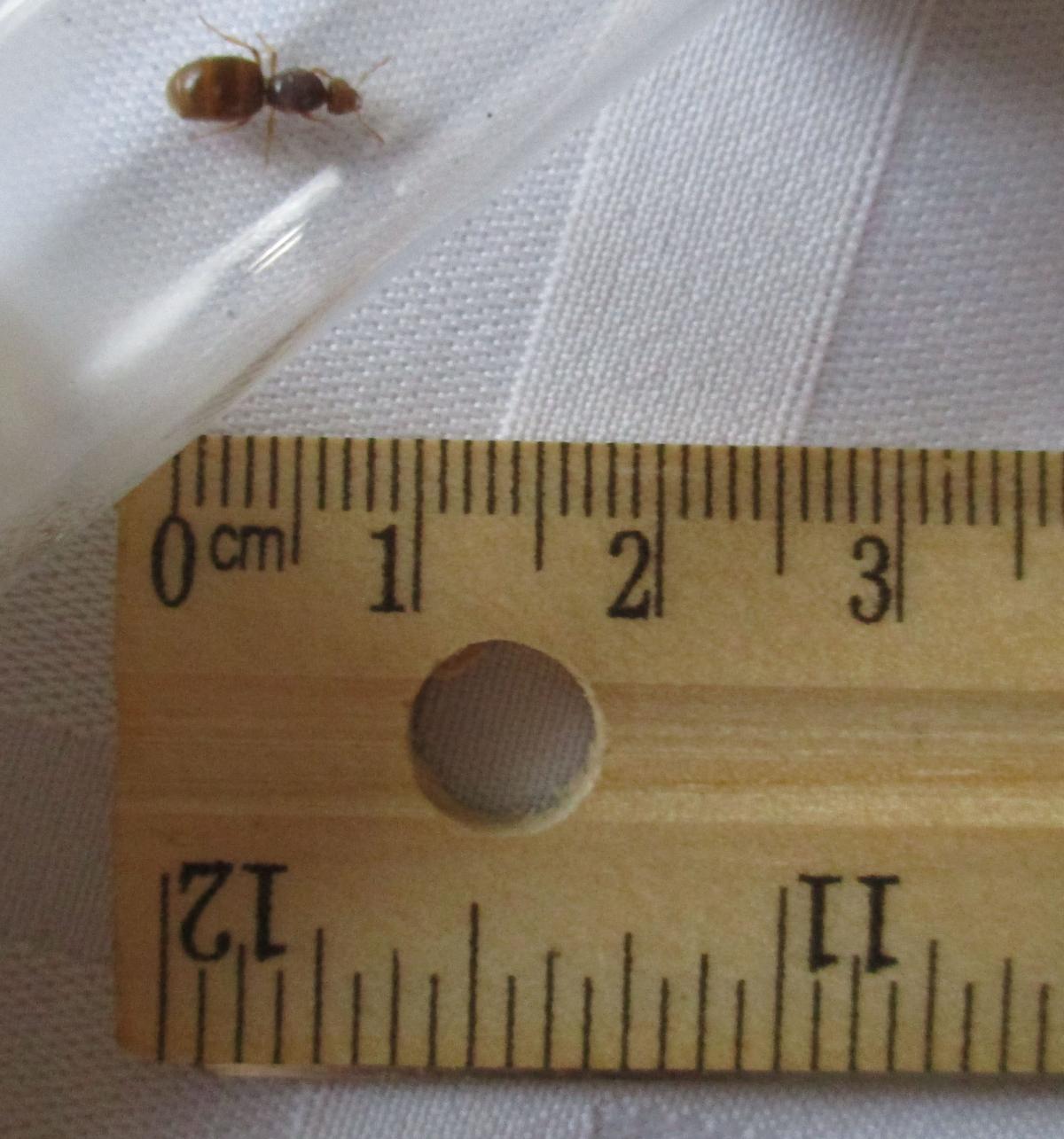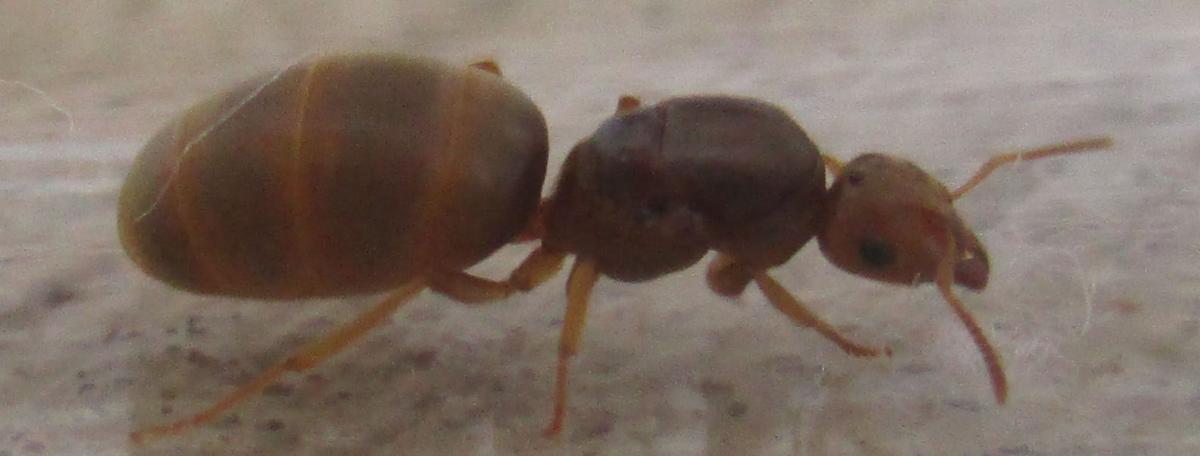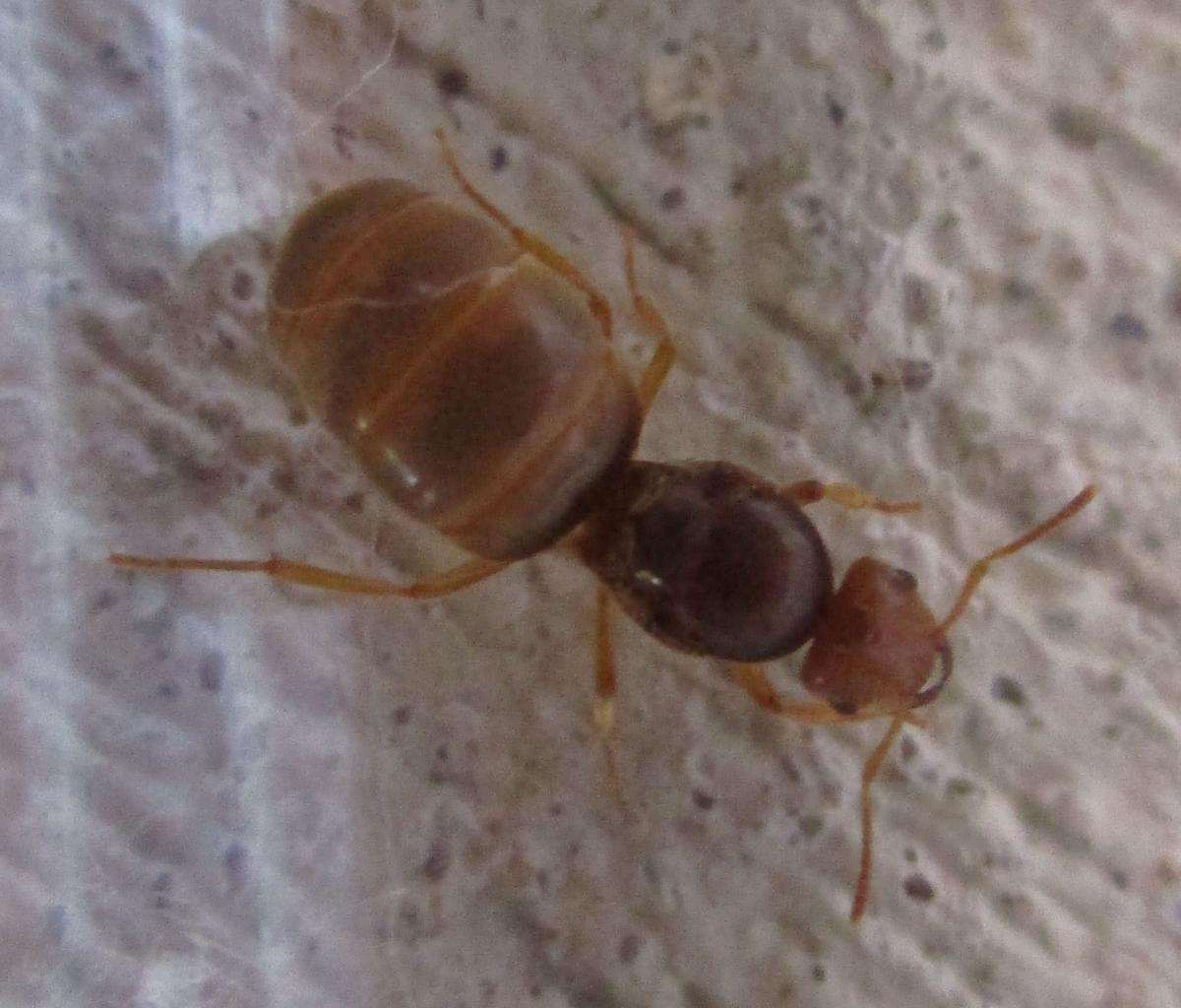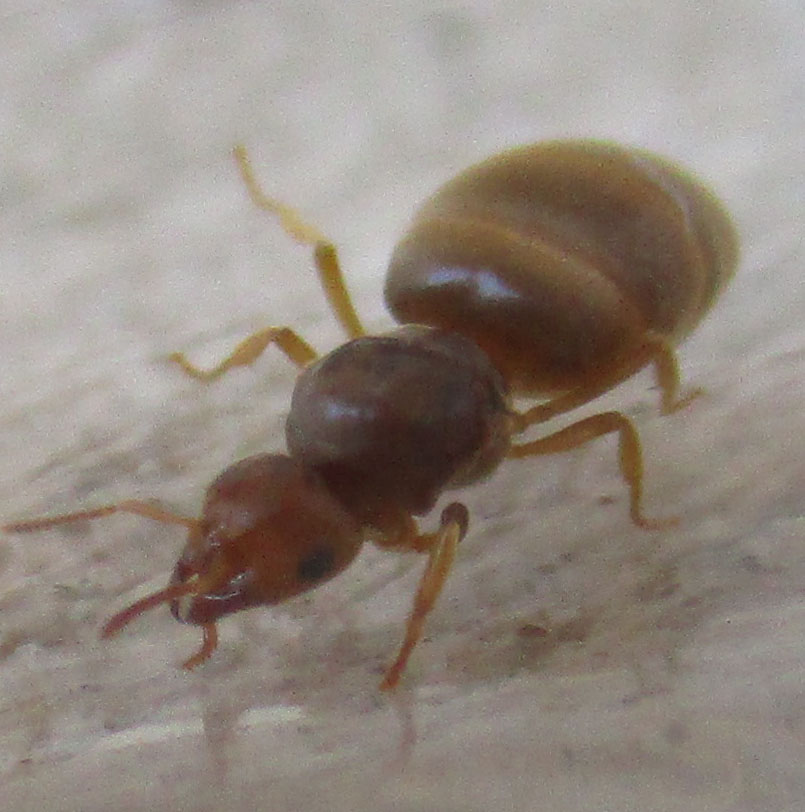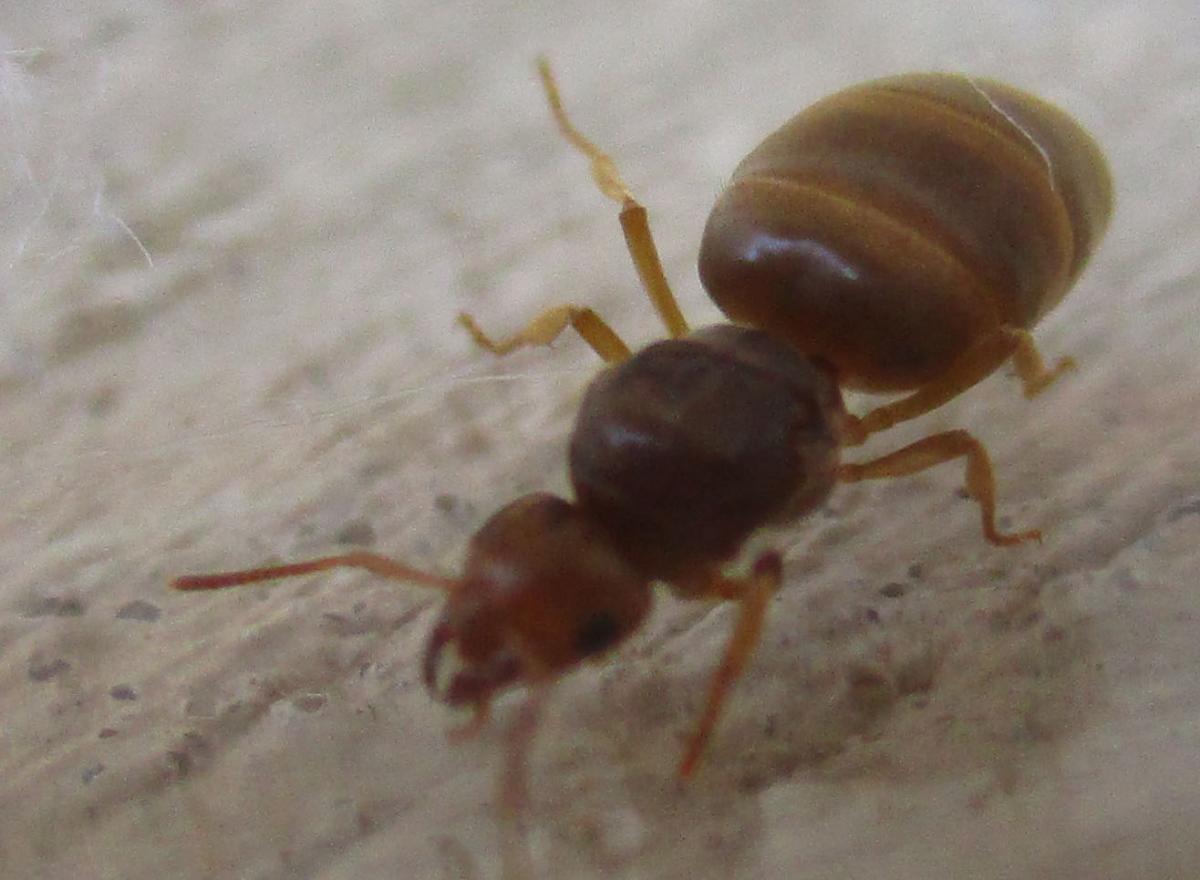Location of collection: State College, PA. Suburban driveway.
Date of collection: 08/27/15
Habitat of collection: My neighbor's driveway in the suburbs of State College, PA
Length: See pics for scale
Distinguishing characteristics: I found none on my own driveway, but I found 10 in a small area of a neighbor's driveway. Odd.
... Lasius flavus?
Edited by Works4TheGood, September 1 2015 - 6:12 PM.






